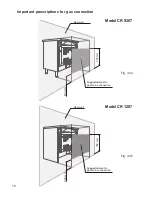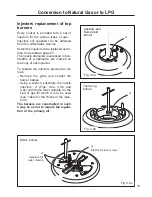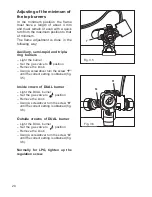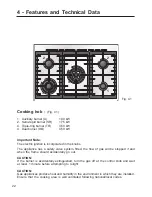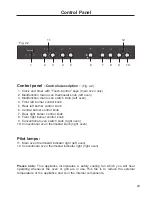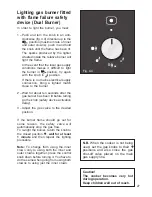
16
The installation of the gas appliance to Natural Gas or LP Gas must be carried out by a
suitably qualified and registered person. Installers shall take due account of the provisions
of the relevant British Standards Code of Practice, the Gas Safety Regulations and
the Building Standards (Scotland)(Consolidation) Regulations issued by the Scottish
Development Department.
Installation to Natural Gas
Installation to Natural Gas must conform to the Code of Practice, etc.
The supply pressure for Natural Gas is 20 mbar.
The installation must conform to the relevant British Standards.
Installation to LP Gas
When operating on Butane gas a supply pressure of 28-30 mbar is required. When
using Propane gas a supply pressure of 37 mbar is required.
The installation must conform to the relevant British Standards.
Warning:
Only a suitably qualified and registered person, also with technical knowledge
of electricity should install the appliance. He should observe the Regulations and Codes
of Practice governing such installation of gas appliances.
Note: It is recommended that the gas connection to the appliance is installed with a
flexible connecting tube made to BS5386.
Notes:
- Flexible hoses can be used where the sited ambient temperature of the hose
does not exceed 70°C. These hoses must be manufactured in accordance with
BS669 part 1 and be of the correct construction for the type of gas being used.
- Gas hoses designed for natural gas MUST NOT be used for supplying LPG gas
(LPG gas hoses can be identified by a either a red band or stripe on the rubber
outer coating of the hose).
The hose should not be crushed or trapped or be in contact with sharp or
abrasive edges.
Using a suitable leak detection fluid solution (e.g. Rocol) check each gas connection
one at a time by brushing the solution over the connection.
The presence of bubbles will indicate a leak.
If there is a leak, tighten the fitting and then recheck for leaks.
IMPORTANT!
Do not use a naked flame to test for leaks.
Gas connection

















